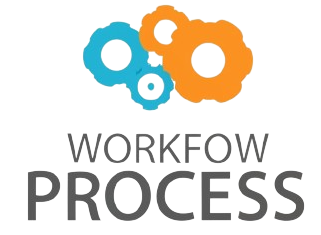Understanding vector databases is becoming essential as businesses and researchers grapple with vast amounts of unstructured data like images, audio, and text. Unlike traditional databases, which handle structured information, vector databases specialize in managing high-dimensional vectors — numerical representations of data that capture semantic meaning and relationships. This article explores what vector databases are, how they work, and why they’re revolutionizing fields such as machine learning, natural language processing, and recommendation systems. Whether you’re a developer, data scientist, or curious reader, gaining insight into vector databases opens the door to understanding how modern applications identify similarities, perform efficient searches, and deliver smarter user experiences in an increasingly data-driven world.
What is a vector database?
A vector database stores and indexes data as vectors, which are arrays of numbers representing complex pieces of information. These vectors encode features or patterns extracted from raw data using techniques like embeddings in machine learning.
Unlike a traditional relational database that uses tables and SQL queries mainly for exact matches, vector databases excel at finding approximate matches based on similarity. This makes them ideal for applications requiring semantic understanding, such as image retrieval, voice recognition, or text search.
Example: Consider a music streaming app where users want to find songs that sound similar to their favorites. Each song can be converted into a vector capturing its rhythm, melody, and genre. A vector database then quickly locates songs with vectors close to the user’s input song, enabling personalized recommendations beyond title or artist name.
How vector databases work
At the core, vector databases rely on algorithms to index and search high-dimensional vectors efficiently. Common methods involve approximate nearest neighbor (ANN) search techniques, such as HNSW (Hierarchical Navigable Small World) or Faiss (Facebook AI Similarity Search), which reduce the time and resources needed to find similar vectors in large datasets.
Vectors are compared primarily using distance metrics like cosine similarity, Euclidean distance, or Manhattan distance — measurements that quantify how “close” or “far” vectors are from one another in the multidimensional space.
Example: Imagine a photo management app where users want to find pictures similar to a given image. The app converts every photo into a vector containing features like colors, shapes, and textures. When searching, the vector database computes distances between vectors and returns images most similar to the query, even if filenames or metadata differ.
Applications of vector databases
Vector databases have emerged as foundational technologies behind many modern AI-driven solutions:
- Natural language search: Vector embeddings from models like BERT transform queries and documents into vectors, enabling semantic search that understands meaning instead of just keywords.
- Recommendation engines: Retail or streaming platforms use vector similarity to suggest products or content based on user preferences and behavioral patterns.
- Fraud detection: Financial institutions analyze transaction patterns as vectors to detect anomalies or suspicious activity.
Example: A global e-commerce site incorporates a vector database to power “search by image.” Customers upload photos of clothing, and the system returns visually similar items, even if product titles or descriptions do not match exactly. This enhances customer experience and increases sales conversion.
Challenges and future trends
While vector databases offer powerful capabilities, they also present challenges. Storing and processing high-dimensional data demands significant computing resources. Additionally, developing indexing algorithms that balance search speed, accuracy, and scalability continues to be an active research area.
Looking forward, integration with edge computing, improvements in vector compression, and tighter synergy with deep learning models promise faster and more cost-effective vector search services.
Example: Autonomous vehicles generate enormous sensory data encoded as vectors that must be analyzed in real-time to make driving decisions. Current advancements focus on optimizing vector databases to handle this data at the edge, reducing latency and improving safety.
Conclusion
Vector databases represent a paradigm shift in data storage and retrieval, unlocking a new dimension of possibilities for handling unstructured and complex data. By converting diverse data types into vectors and utilizing efficient similarity search algorithms, these databases enable applications like semantic search, image recognition, and personalized recommendations.
As AI and machine learning continue to evolve, vector databases will become even more integral in powering intelligent systems that understand context and nuances beyond traditional keyword matching. Despite challenges related to resource demands and scalability, ongoing innovations are making vector search faster and more accessible.
Ultimately, embracing vector databases empowers organizations to extract deeper insights from their data, enhance user experiences, and stay competitive in a rapidly digitalizing world.
